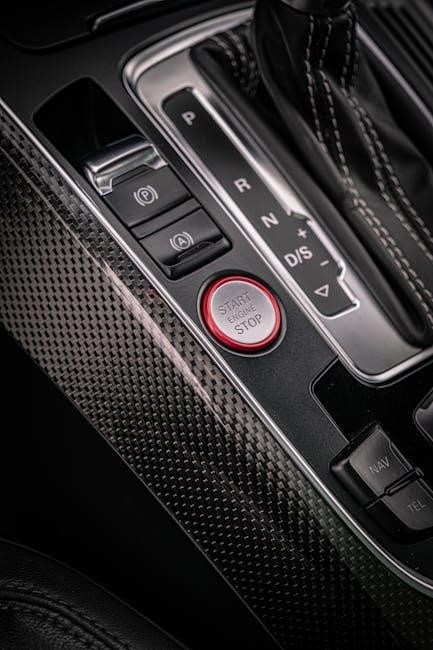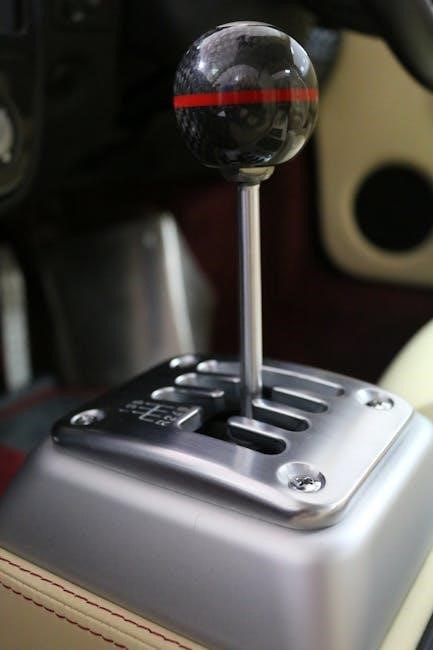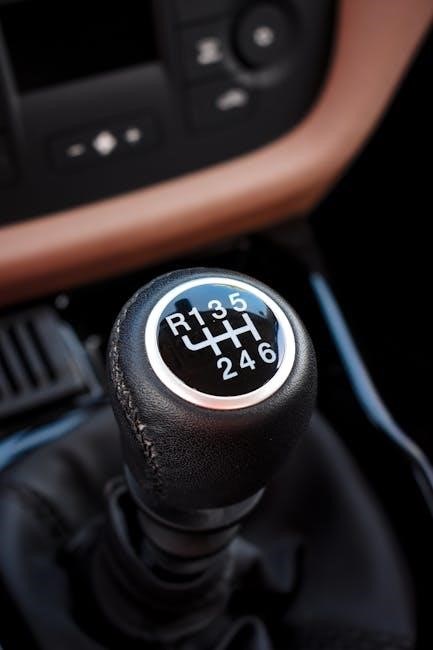The Audi RS5 manual transmission is a rare feature, with most models equipped with automatic transmissions, using torque converters for smooth gear shifts, and
- sequential gearing
for optimal performance always.
Overview of the Audi RS5 Model
The Audi RS5 is a high-performance variant of the RS5 model, equipped with a twin-turbocharged 2.9-liter V6 engine, producing 444 horsepower and 443 pound-feet of torque. The RS5 model is available in various body styles, including a sportback and avant. The Audi RS5 features a luxurious interior, with premium materials and advanced technology, including a virtual cockpit and MMI infotainment system. The exterior design is characterized by a sleek and aggressive styling, with a distinctive front grille and rear diffuser. The RS5 model is designed to provide a balance of performance, comfort, and style, making it a desirable choice for driving enthusiasts. The Audi RS5 has a rich history, with the first generation introduced in 2010, and subsequent models undergoing significant updates and improvements. The current generation RS5 model is a testament to Audi’s commitment to innovation and excellence in the automotive industry, with a range of innovative features and technologies. The RS5 model is a popular choice among car enthusiasts, and its reputation continues to grow.
Importance of Manual Transmission in RS5
The manual transmission in the Audi RS5 plays a crucial role in enhancing the driving experience, providing a sense of connection and control between the driver and the vehicle. With a manual transmission, drivers can fully utilize the capabilities of the RS5’s powerful engine, exploiting the full range of gear ratios to optimize performance and efficiency. The manual transmission also allows for a more engaging and immersive driving experience, as drivers must actively participate in shifting gears and managing the vehicle’s speed and momentum; Furthermore, the manual transmission is often preferred by driving enthusiasts, who value the tactile feedback and sense of accomplishment that comes with mastering the art of manual shifting. The importance of manual transmission in the RS5 is also reflected in its design, with a shifting mechanism that pays homage to manual transmission cars, injecting a sense of fun and excitement into the driving experience. This feature is highly valued by RS5 owners and enthusiasts.

Features of RS5 Manual Transmission
Using sequential gearing and
- advanced materials
for optimal performance always with ease.
Design and Mechanism of the Transmission
The design of the RS5 manual transmission is complex, involving a multi-step process to ensure smooth gear shifts and optimal performance. The mechanism of the transmission is based on a
- sequential gearing
system, which allows for quick and precise shifts. The transmission is also equipped with advanced materials and cutting-edge technology to reduce wear and tear, and to improve overall efficiency. The gearbox is designed to work in conjunction with the engine and drivetrain to provide a seamless driving experience. The transmission is also designed to be compact and lightweight, which helps to improve the overall power-to-weight ratio of the vehicle. Additionally, the transmission is equipped with a state-of-the-art clutch system that provides smooth and precise engagement and disengagement of the gears. The design and mechanism of the transmission are critical to the overall performance and driving experience of the RS5.
Benefits of Manual Transmission in RS5
The manual transmission in the RS5 offers several benefits, including improved driver engagement and a more immersive driving experience. The manual transmission also provides better control and precision when shifting gears, allowing drivers to tailor their driving style to the road conditions. Additionally, the manual transmission is often more fuel-efficient than automatic transmissions, especially in city driving or stop-and-go traffic. The manual transmission also tends to be less complex and less expensive to maintain than automatic transmissions, with fewer moving parts and less electronic complexity. Furthermore, the manual transmission is often preferred by driving enthusiasts who value the connection and involvement that comes with shifting gears manually. Overall, the manual transmission in the RS5 is a key feature that sets it apart from other vehicles in its class. The benefits of the manual transmission make it a great option for drivers who value performance and driving experience.

Comparison with Automatic Transmission
RS5 manual transmission is compared to automatic using
- tables
and charts to show differences always.

Differences between Manual and Automatic Transmission
The main differences between manual and automatic transmission in the RS5 model lie in the gearing system and clutch operation. Manual transmission requires the driver to manually shift gears using the gearshift and clutch pedal, whereas automatic transmission uses a torque converter to automatically shift gears. This difference affects the driving experience and fuel efficiency of the vehicle. The manual transmission provides a more engaging driving experience and better fuel economy, while the automatic transmission offers a more convenient and smooth ride. The choice between manual and automatic transmission ultimately depends on the driver’s preference and driving style. Additionally, the maintenance and repair requirements for manual and automatic transmissions also differ, with manual transmissions generally requiring less maintenance. Overall, understanding the differences between manual and automatic transmission is essential for RS5 owners to make an informed decision about their vehicle’s transmission type. The transmission type also affects the vehicle’s performance and handling.
Performance Comparison of Manual and Automatic Transmission
The performance of manual and automatic transmissions in the RS5 model is a key consideration for drivers. In terms of acceleration, manual transmissions tend to provide quicker 0-60mph times due to the driver’s ability to control the gears. However, automatic transmissions with advanced torque converters can also deliver impressive acceleration. The quarter-mile time is also affected by the transmission type, with manual transmissions generally performing better. Additionally, the top speed of the vehicle can be influenced by the transmission type, with manual transmissions often allowing for higher top speeds. The RS5’s 2.9-liter twin-turbo V6 engine is well-suited for both manual and automatic transmissions, producing 444 horsepower and 443 pound-feet of torque. Overall, the performance comparison between manual and automatic transmissions in the RS5 model is closely tied to the driver’s preferences and driving style, as well as the specific transmission technology used. The performance difference is also noticeable in real-world driving scenarios.

Common Issues with RS5 Manual Transmission
RS5 manual transmission issues include transmission slip and worn clutch packs causing problems with
- gearing
and performance always.
Transmission Slip and Its Causes
Transmission slip in the RS5 manual transmission can be caused by various factors, including low fluid levels, worn clutch packs, and faulty solenoids. The symptoms of transmission slip can be identified by a decrease in performance, where the engine RPM increases but the car does not pick up speed. This can be a frustrating issue for drivers, especially when it occurs unexpectedly. According to online forums, some owners have reported that transmission slip can be intermittent, making it difficult to diagnose and repair. In some cases, the issue may resolve itself, but it is essential to address the problem to prevent further damage to the transmission. A thorough inspection and diagnosis by a qualified mechanic are necessary to determine the cause of the transmission slip and recommend the appropriate repairs. The repair process may involve replacing worn or damaged components, such as clutch packs or solenoids, and refilling the transmission fluid to the recommended level.
Worn Clutch Packs and Solenoid Issues
Worn clutch packs and solenoid issues are common problems that can affect the performance of the RS5 manual transmission. The clutch packs are a critical component of the transmission, responsible for engaging and disengaging the gears. Over time, they can become worn, leading to slipping and hesitation. Solenoid issues can also cause problems, as they control the flow of fluid within the transmission. A faulty solenoid can disrupt the transmission’s ability to shift gears smoothly, leading to erratic performance. Online forums suggest that replacing the clutch packs and solenoids can be a complex and time-consuming process, requiring specialized tools and expertise. It is essential to address these issues promptly to prevent further damage to the transmission. A qualified mechanic can diagnose and repair these problems, ensuring the RS5 manual transmission operates smoothly and efficiently. Regular maintenance and inspection can help identify potential issues before they become major problems, reducing the risk of costly repairs and prolonging the life of the transmission.
